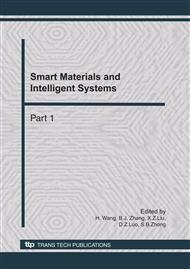[1]
Cho J. J, Ozment J, Sink H. Logistics capability, logistics outsourcing and firm performance in an e-commerce market[J]. International Journal of Physical Distribution & Logistics Management. 2008, 33(5): 336-358.
DOI: 10.1108/09600030810882825
Google Scholar
[2]
Murillo L. Supply Chain management and the international dissemination of e-commerce. Industrial Management & Data Systems. 2001, 101(7): 370-377.
DOI: 10.1108/eum0000000005825
Google Scholar
[3]
Wuping Zheng, Yufei Yuan, Identifying the differences between stationary office support and mobile work support: a conceptual framework, International Journal of Mobile Communications, Vol 5, No. 1, 2007: 107-122.
DOI: 10.1504/ijmc.2007.011492
Google Scholar
[4]
Hong, J., Suh, E., Kim, S., Context-aware systems: A literature review and classification, Expert Systems with Applications 36 (2009): 8509-8522.
DOI: 10.1016/j.eswa.2008.10.071
Google Scholar
[5]
C. Bolchini, C. Curino, F.A. Schreiber, L. Tanca, Context integration for mobile data tailoring, In Proc. IEEE/ACM of Int. Conf. on Mobile Data Management. IEEE, ACM, May 2006: 35-40.
DOI: 10.1109/mdm.2006.52
Google Scholar
[6]
Mallat, N., Rossi, M., Tuunainen, V.K., Oorni, A. The Impact of Use Situation and Mobility on the Acceptance of Mobile Ticketing Services, Proc. of the 39th HICSS. Jan. 2006: 64-69.
DOI: 10.1109/hicss.2006.472
Google Scholar
[7]
Schilit, B., and Theimer, M., Disseminating Active Map Information to Mobile Hosts. IEEE Network, 1994, 8(5): 22-32.
DOI: 10.1109/65.313011
Google Scholar
[8]
S.J. Hong and K.Y. Tam, Understanding the adoption of multipurpose information appliances: The case of mobile data services. Information Systems Research, 2006. 17(2): 162-179.
DOI: 10.1287/isre.1060.0088
Google Scholar
[9]
R. Wakefield and D. Whitten, Mobile computing: A user study on hedonic/utilitarian mobile device usage. European Journal of Information Systems, 2006. 15(3): 292-300.
DOI: 10.1057/palgrave.ejis.3000619
Google Scholar
[10]
Ahn H J, Lee H J, Cho K, Park S J. Utilizing Knowledge Context in Virtual Collaborative Work[J]. Decision Support Systems, 2005, 39(4): 563-582.
DOI: 10.1016/j.dss.2004.03.005
Google Scholar


